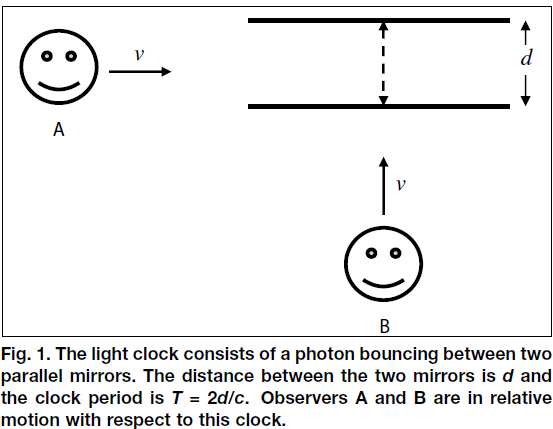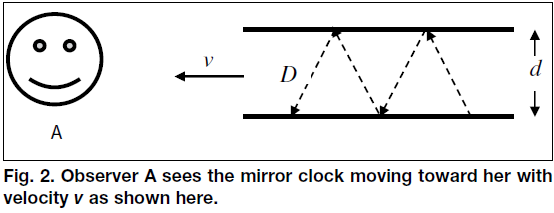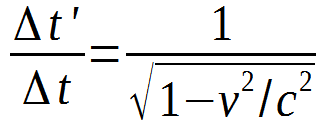Derivation of the Relative Velocity Time
Dilation Equation

*The following is an excerpt from Fred Behroozi's "A Simple
Derivation of Time Dilation and Length Contraction in Special
Relativity" It is just a nice and comprehensive explanation I
wanted to include.*
"Consider a simple light clock in its rest frame. The clock consists
of two parallel mirrors with a photon bouncing between them (see
Fig. 1). The photon’s period of oscillation in its rest frame is
(1) T = 2d/c.
As usual c is the speed of light and d stands for the “proper”
distance between the parallel mirrors.


Now let us consider the period of this clock as measured by
Observers A and B, each moving with speed v toward the clock as seen
in Fig. 1. Each of the two observers carries along a clock identical
to the mirror clock for time keeping. Observer A will see the clock
moving toward her with velocity v as shown in Fig. 2 and measures
the period of the moving clock as the time taken by the photon to
bounce up and down between the two mirrors. Let TA be the period of
the clock measured by Observer A. Clearly TA is the time the photon
takes for a round trip between the two mirrors, which consists of
one bounce up and one down. The length of each bounce D (see Fig. 2)
is simply the hypotenuse of a right triangle with the sides d and
vTA/2. Therefore,
(2) D = [d^2 + (vTA/2)^2]^1/2,
and the round trip time is given by
(3) TA = 2D/c = {2[d^2 + (vTA/2)^2]^1/2}/c
or
(4) TA^2 (1 – v^2/c^2) = 4d^2 /c^2
since by Eq. (1)
(5) 4d^2 /c^2 = T2.
Observer A concludes that the period of the moving clock is
(6) TA = T / (1 – v^2/c^2)^1/2
This is the usual time dilation result. So Observer A concludes that
the “moving” clock runs slow compared with his own clock." (Fred
Behroozi).
Where equation 6 gives is the equation used in Relative
Velocity Time Dilation:


Return to:
Title
Page
Relative
Velocity Time Dilation


